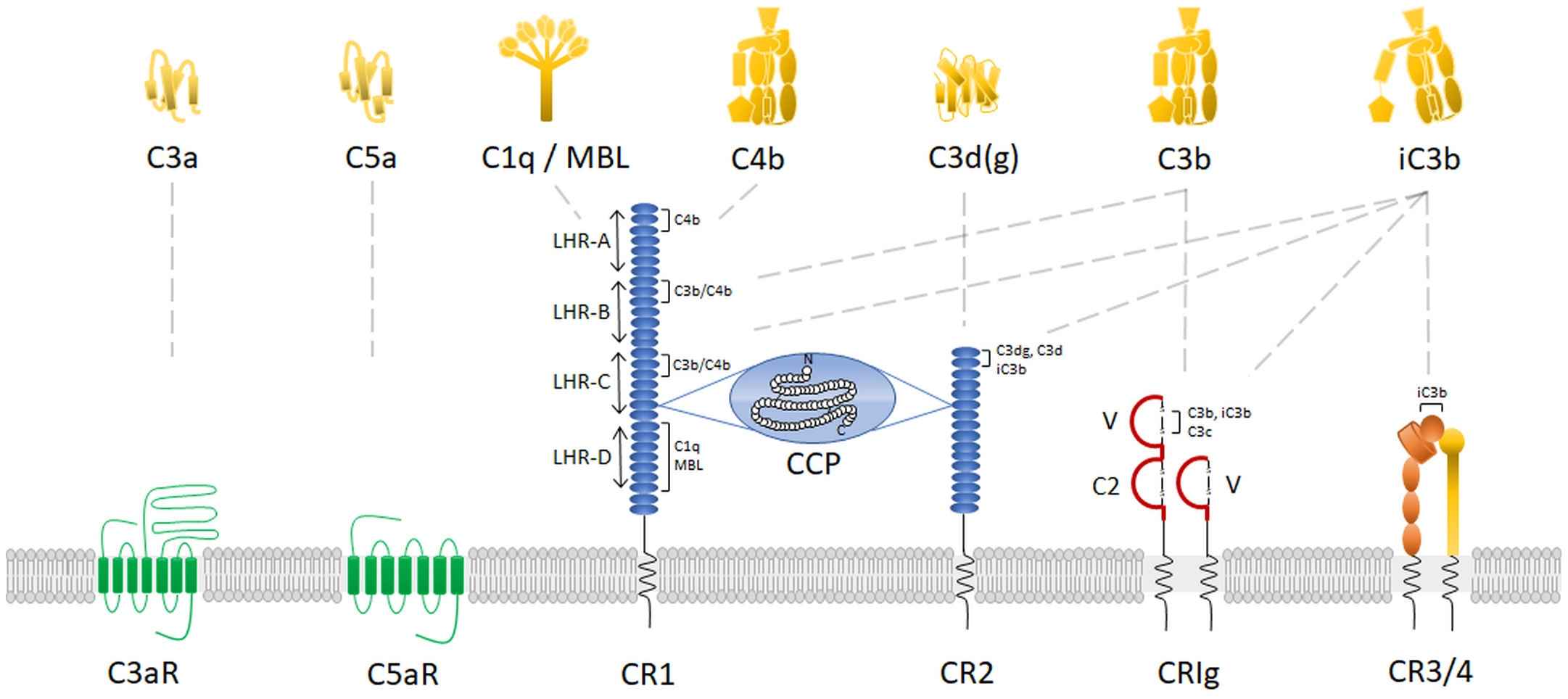The complement system is vital for tissue homeostasis and cellular integrity. Complement activation mediates the removal of microorganisms and the clearance of modified self-cells. Regulators of complement system control the spontaneously activated complement cascade and any disturbances in this delicate balance will result in damage to tissues and in autoimmune disease. Thus, insights into the complement regulators are important for understanding the complement system composition, disease pathology and for enabling the development of diagnostic tools as well as therapies for complement-associated diseases.
-
Complement Regulator of Complement System: RCA/CCP family
Triggering of complement system occurs via three major pathways, the classical pathway, the alternative pathway and the lectin pathway, which converge with the formation of C3 convertases cleaving C3 to produce the active complement component C3b. Protection of host cells from complement is largely mediated by a family of proteins termed regulators of complement activation (RCA), which target C3 convertases. The notable members of RCA family include decay-accelerating factor (DAF; CD55), membrane cofactor protein (MCP; CD46), C4b binding protein (C4BP) and factor H. The two regulatory activities owing to which these RCA proteins regulate C3 convertases are cofactor activity (CFA) and decay-accelerating activity (DAA). CFA refers to inactivation of the non-catalytic subunit (C3b/C4b) of C3 convertases by the serine protease factor I. DAA refers to irreversible dissociation of C3 convertases by the RCA protein.
-
Complement Regulator of Complement System: Others
Besides RCA family, there are also other components involved in the complement regulatory, such as C1 inhibitor (C1-INH), protectin (CD59), vitronectin (VTN) and clusterin (CLU). Within the complement system, C1-INH is one of several soluble and membrane-bound regulatory proteins but the only one inhibiting the initial activation of the complement system that can occur via three different pathways. As for protectin, it inhibits the final steps of membrane attack complex (MAC) assembly on cell membranes. By binding to the C5b-8 complex, protectin limits C9 input and prevents formation of the polymeric C9 complex. As for vitronectin and clusterin, they are both fluid-phase regulators of the insertion of the MAC.
-
Complement Receptors of Complement System
Complement receptors are membrane proteins expressed on the surface of immune cells and interact with complement factors leading to the removal of antigen from the circulation. The complement system is instrumental in the induction of granule release and synthesis of cytotoxic oxygen- and nitrogen-containing compounds, the promotion of particle phagocytosis, the clearance of soluble immune complexes from the circulation, and the induction of a primary B-cell response to antigen. These effects are exerted through the interaction of the activation products of complement factors C1, C3 or C5 with specific receptors on the responding cells. These receptors can be divided into three categories:
-
Receptors recognizing the anaphylotoxic polypeptides, C3a, C5a.
-
Receptors binding the active C3 fragment, C3b, and its degradation products, iC3b and C3dg.
-
Receptors for C1q and related collagenous lectins.

Fig. 1 Complement receptors.1, 2
Due to its potent proinflammatory and cellular destructive capabilities, precise regulation of the complement system is necessary to prevent complement damage to normal host tissue (wrong or inappropriate target) and fluid-phase activation (no target). Creative Biolabs provides a full range of complement therapeutic services for different kinds of complement regulators of complement system.
References
-
Vandendriessche, Sofie, et al. "Complement receptors and their role in leukocyte recruitment and phagocytosis." Frontiers in Cell and Developmental Biology 9 (2021): 624025.
-
under Open Access license CC BY 4.0, without modification
Related Product
For Research Use Only.
Related Sections:

